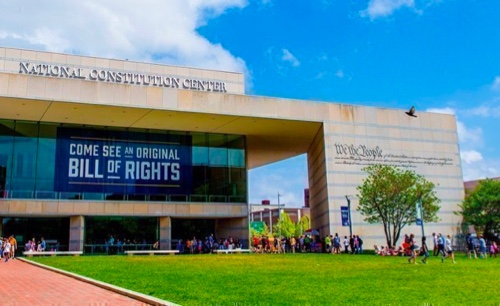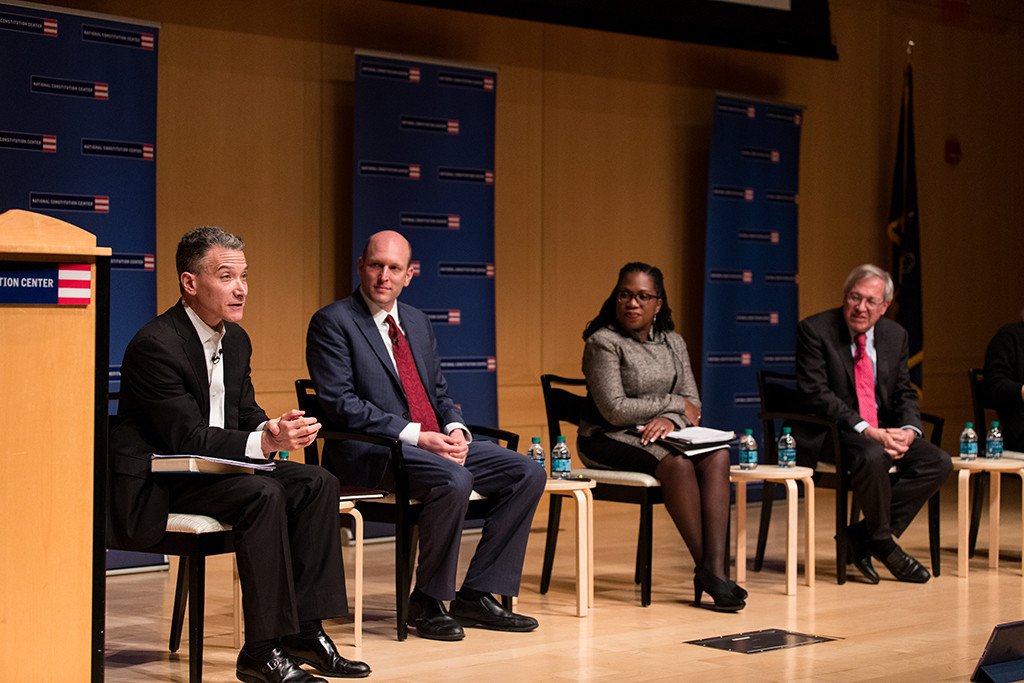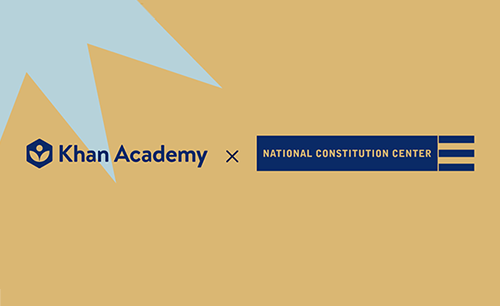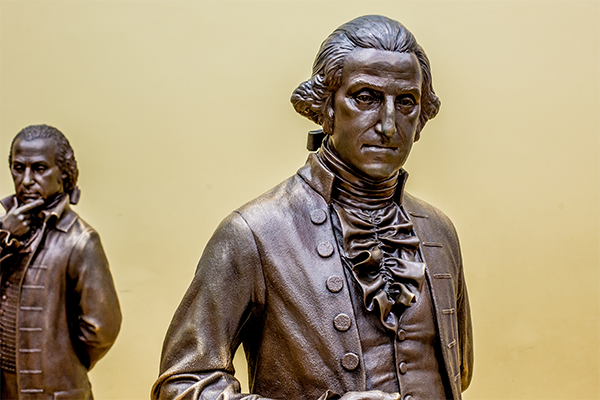Article I, Section 1 provides: “All legislative Powers herein granted shall be vested in a Congress of the United States, which shall consist of a Senate and a House of Representatives.” The Constitution first vests all federal legislative powers in a representative bicameral Congress. Central to the social compact, this lawmaking institution forms the foundation of the federal government and allows the people’s representatives to act together for the common good. Article I, Section I establishes several fundamental features of the Congress.
- Bicameralism. The Framers of the Constitution of 1789 created a powerful national legislature to represent both the People and the States. Yet they also feared its awesome power and therefore determined to limit that power in order to protect individual liberty. The Vesting Clause embodies two strategies for limiting Congress’s power. One strategy was to condition legislation upon the agreement of two differently constituted Chambers. SeeThe Federalist No. 51(James Madison). With smaller districts and short terms, the House of Representatives was expected to be responsive to We the People. But hasty popular measures could be ameliorated or killed in the Senate, whose members served for longer terms and were selected by the state legislatures until enactment of the Seventeenth Amendment.
- Limited and Enumerated Powers.As a more explicit limitation, the Constitution vests Congress only with those legislative powers that are “herein granted.” Unlike state legislatures that enjoy plenary authority, Congress has authority only over the subject matter specified in the Constitution, particularly in Article I, Section 8. Early Presidents and Congresses took seriously the limited jurisdiction of the federal government. They assumed no federal power to fund internal improvements, for example. They also debated what powers might be implied by the grant of the enumerated powers.
A significant early debate concerned whether Congress could create a Bank of the United States. James Madison and Thomas Jefferson argued against such a power, but President Washington ultimately supported Alexander Hamilton’s plan for the Bank, even though the Framers had rejected bank incorporation as an enumerated power. The Supreme Court upheld the constitutionality of the Bank and recognized that the enumerated powers included some implied ones in McCulloch v. Maryland (1819).
The New Deal Court expanded upon McCulloch’s interpretation of Congress’s enumerated powers: the Commerce Clause of Article I, Section 8, Clause 3 grew into a capacious source of congressional authority to regulate the economy, and the Necessary and Proper Clause at the end of Section 8 was interpreted to expand Congress’s authority yet further in Wickard v. Filburn (1942). The Court has afforded significant deference to Congress’s judgment about how far to press its enumerated powers.
Despite the expansive interpretation of the commerce power, the principle of a Congress vested only with limited and enumerated powers endures. In United States v. Lopez (1995), the Court invalidated a federal law making it a crime to possess a firearm close to a public school. Not only did Congress fail to connect the statute to an enumerated power, but the power asserted (regulation of commerce) was not considered the kind of economic regulation the Court had previously sanctioned. Lopez reaffirmed some outer boundary to the federal regulatory power.
- Nondelegation. Article I, Section 1 vests all legislative powers in Congress, which means the President and the Supreme Court cannot assert legislative authority. SeeYoungstown Sheet & Tube Co. v. Sawyer (1952). This marks an important separation of powers between the departments of the federal government. It also has been interpreted to include a principle of nondelegation, that the people’s representatives in Congress must make the law, rather than delegate that power to the executive or judicial branch.
For most of American history, judges and commentators have assumed that Congress cannot “delegate” legislative authority and the Supreme Court has located this rule in Article I, Section 1. As the Court recently reiterated, “Legislative power … belongs to the legislative branch, and to no other.” FCC v. Consumers’ Research (2025) (citing Whitman v. American Trucking Associations, Inc. (2001)). Individual Justices have opined that the nondelegation doctrine ought to be treated as a serious limitation on Congress’s authority. (For example, see Justice Thomas’s dissent in Whitman.)
While the principle of nondelegation persists, the Supreme Court has allowed a lot of delegation, so long as Congress includes intelligible principles to guide discretion. The Marshall Court ruled that Congress could delegate authority to the federal courts to adopt rules of process, Wayman v. Southard (1825), and to the President to revive trading privileges, Cargo of the Brig Aurora v. United States (1813). Although assuming a nondelegation doctrine, no law was invalidated for this reason in the nineteenth century.
In 1935, the Supreme Court invalidated a congressional delegation of lawmaking authority to private institutions—the only occasion where the Court has invalidated a law under the nondelegation doctrine. A.L.A. Schechter Poultry Corp. v. United States (1935); Panama Refining Co. v. Ryan (1935).
Particularly since the New Deal, Congress often legislates in open-ended terms that give substantial authority to executive branch officials and judges. Between 1935 and 2018, the Justices have either applied the nondelegation doctrine leniently, to allow large-scale delegations accompanied by vague limiting principles, Mistretta v. United States (1989), or have said the doctrine of unconstitutional delegation is not readily enforceable by the courts. (See Justice Scalia’s dissent in Mistretta). In United States v. Gundy (2018), three Justices advocated much stricter enforcement of the nondelegation doctrine. The Court, however, continues to allow delegations so long as Congress directs their exercise by statutory rules and principles. FCC v. Consumers’ Research (2025).
The Court, however, sometimes gives effect to the values undergirding the nondelegation principle through narrow interpretations of statutory delegations. One tool for this is the major questions doctrine. The doctrine presumes that “Congress intends to make major policy decisions itself, not leave those decisions to agencies” and requires “clear congressional authorization” before reading a statute to give an agency authority to make decisions of “vast ‘economic and political significance.’” West Virginia v. EPA (2022) (quoting FDA v. Brown & Williamson Tobacco Corp. (2000)).
In challenges to agency regulations, the “major questions doctrine” has played an important role in trimming back potentially broad congressional delegations of authority. E.g., Nat’l Fed. Indep. Bus. v. Dep’t of Labor, OSHA (2021) (COVID regulation); West Virginia v. EPA (2022) (environmental regulation); Biden v. Nebraska (student loan forgiveness). In Consumers’ Research, Justice Kavanaugh concurred and suggested that one reason he was willing to apply the deferential “intelligible principle” standard of nondelegation review was the availability of the major questions doctrine to limit agency activism without unduly limiting congressional authority.






